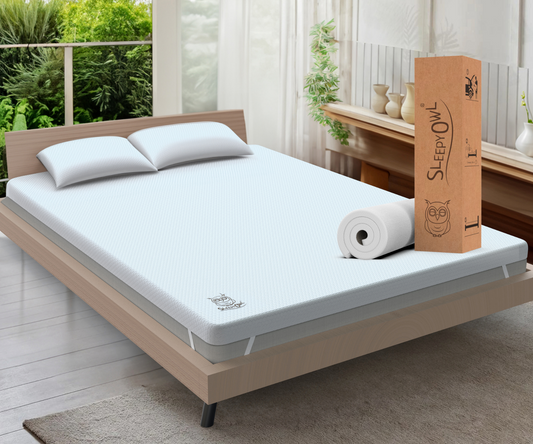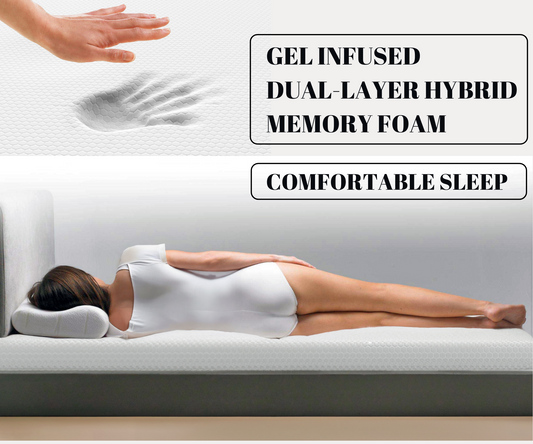What is a topper and what is it used for?
In the realm of sleep accessories, mattress toppers have emerged as a popular solution for enhancing comfort and support. These additional layers of cushioning are designed to be placed on top of an existing mattress, transforming its feel and performance without the need for a complete replacement. As sleep quality is increasingly recognized as a critical component of overall health and well-being, the demand for mattress toppers has surged.
They cater to a variety of preferences, offering options that range from plush softness to firm support, thus appealing to a wide audience. The concept of mattress toppers is not new; they have been utilized for centuries in various forms. Historically, people have used materials such as feathers, wool, and cotton to create softer sleeping surfaces.
However, the modern era has introduced advanced materials and technologies that have revolutionized the way we think about sleep comfort. Among these innovations, memory foam has gained significant attention for its unique properties and benefits, making it one of the most sought-after materials for mattress toppers today. Check out this amazing Memory Foam Mattress Topper for a better night's sleep.
What is a Memory Foam Mattress Topper?
A memory foam mattress topper is a specialized layer of foam designed to enhance the comfort of an existing mattress. Made from viscoelastic foam, this material is known for its ability to conform to the shape of the body while providing support. When pressure is applied, memory foam softens and molds to the contours of the sleeper, distributing weight evenly across the surface.
This characteristic not only alleviates pressure points but also helps in maintaining proper spinal alignment during sleep. Memory foam toppers come in various thicknesses and densities, allowing consumers to choose a product that best suits their individual needs. Typically, these toppers range from two to five inches in thickness, with denser options providing more support and durability.
The manufacturing process often involves infusing the foam with cooling gel or other materials to enhance breathability and temperature regulation, addressing one of the common complaints associated with traditional memory foam—heat retention. As a result, memory foam mattress toppers can offer a customized sleep experience that caters to diverse preferences.
Benefits of Using a Memory Foam Mattress Topper
The advantages of incorporating a memory foam mattress topper into one’s sleep setup are manifold. One of the most significant benefits is the enhancement of comfort levels. For individuals who find their current mattress too firm or lacking in support, a memory foam topper can provide an immediate solution by adding a plush layer that conforms to their body shape.
This can lead to improved sleep quality, as users often report feeling more relaxed and less restless throughout the night. Another notable benefit is the reduction of motion transfer. For couples sharing a bed, disturbances caused by one partner’s movements can lead to disrupted sleep for the other.
Memory foam’s unique structure absorbs movement, minimizing the impact felt on the other side of the bed. This feature is particularly advantageous for light sleepers or those who are easily awakened by their partner’s movements. Additionally, memory foam toppers can help alleviate common sleep-related issues such as back pain and joint discomfort by providing targeted support where it is needed most.
How to Choose the Right Memory Foam Mattress Topper
Selecting the ideal memory foam mattress topper involves several considerations that can significantly impact overall satisfaction. One of the primary factors to assess is thickness. Thicker toppers generally provide more cushioning and support but may also alter the feel of the mattress more dramatically.
For individuals who prefer a softer sleeping surface, a thicker topper may be beneficial; however, those who enjoy a firmer feel might opt for a thinner option. Density is another critical aspect to consider when choosing a memory foam topper. Higher density foams tend to offer better support and durability but may also come with a higher price tag.
A density rating of 4-5 pounds per cubic foot is often recommended for those seeking a balance between comfort and longevity. Additionally, it’s essential to evaluate the topper’s cooling properties, especially for those who tend to sleep hot. Look for products that incorporate cooling gel or breathable materials designed to enhance airflow and regulate temperature throughout the night.
How to Use a Memory Foam Mattress Topper
Using a memory foam mattress topper is relatively straightforward, but there are best practices that can enhance its effectiveness and longevity. First and foremost, it’s essential to ensure that the existing mattress is clean and free from debris before placing the topper on top. This not only helps maintain hygiene but also ensures that the topper can perform optimally without any obstructions.
Once positioned correctly on the mattress, it’s advisable to allow the topper some time to expand fully if it has been compressed for shipping. Most memory foam toppers require at least 24 hours to regain their intended shape and firmness after being unpacked. During this time, it’s beneficial to ventilate the room to dissipate any initial odors that may arise from the foam material.
After this settling period, users can enjoy their enhanced sleeping surface, which should provide improved comfort and support.
Maintenance and Care for Memory Foam Mattress Toppers
Proper maintenance is crucial for extending the lifespan of a memory foam mattress topper and ensuring it remains hygienic and comfortable over time. Regular cleaning is an essential aspect of care; however, it’s important to follow specific guidelines to avoid damaging the foam material. Most memory foam toppers come with removable covers that can be machine washed according to the manufacturer’s instructions.
It’s advisable to wash these covers every few months or as needed to keep them fresh. In addition to cleaning the cover, spot cleaning any stains on the foam itself should be done with care. Using mild soap and water on a soft cloth can help remove surface stains without compromising the integrity of the material.
It’s also recommended to rotate or flip the topper periodically (if applicable) to promote even wear and prevent sagging in specific areas. Finally, storing the topper in a cool, dry place when not in use can help protect it from moisture and potential mold growth.
Alternatives to Memory Foam Mattress Toppers
While memory foam mattress toppers are widely popular due to their unique properties, there are several alternatives available that cater to different preferences and needs. Latex mattress toppers are one such option; they offer similar contouring benefits but are made from natural or synthetic latex materials. Latex tends to be more resilient than memory foam and provides a bouncier feel while still offering pressure relief.
Another alternative is gel-infused toppers, which combine traditional foam with cooling gel technology. These toppers aim to provide both comfort and temperature regulation, making them suitable for hot sleepers who may find traditional memory foam too warm. Additionally, there are fiberfill toppers made from synthetic materials that mimic down feathers, offering a plush feel without the weight or heat retention associated with memory foam.
For those seeking an eco-friendly option, organic cotton or wool toppers are available as well. These natural materials provide breathability and moisture-wicking properties while being free from harmful chemicals often found in synthetic products. Each alternative presents its own set of advantages and disadvantages, making it essential for consumers to assess their individual needs before making a decision.
The Versatility of Memory Foam Mattress Toppers
Memory foam mattress toppers stand out in the crowded market of sleep accessories due to their versatility and ability to cater to diverse sleeping preferences. Whether one seeks enhanced comfort, improved support, or relief from specific sleep-related issues, these toppers offer tailored solutions that can significantly improve sleep quality. With various thicknesses, densities, and cooling technologies available, consumers have ample options at their disposal.
As awareness about sleep health continues to grow, investing in a quality memory foam mattress topper can be seen as an essential step toward achieving restorative rest. By understanding how these products work and how best to care for them, individuals can enjoy their benefits for years to come while ensuring they wake up refreshed and ready for each day ahead.
FAQs
What is a topper?
A topper is a type of mattress pad or cover that is placed on top of a mattress to provide additional comfort and support.
What is a topper used for?
A topper is used to enhance the comfort of a mattress by providing extra cushioning, support, and pressure relief. It can also be used to protect the mattress from wear and tear.
What are the different types of toppers?
There are various types of toppers available, including memory foam toppers, latex toppers, down toppers, and wool toppers. Each type offers different levels of support and comfort.
How do I choose the right topper for my mattress?
When choosing a topper, consider factors such as your preferred level of firmness, any specific support needs, and any allergies or sensitivities you may have. It's also important to consider the size and thickness of the topper in relation to your mattress.
How do I care for a topper?
To care for a topper, it's important to regularly rotate and flip it to ensure even wear. Some toppers may also be machine washable, while others may require spot cleaning or professional cleaning. Be sure to follow the manufacturer's care instructions for best results.


